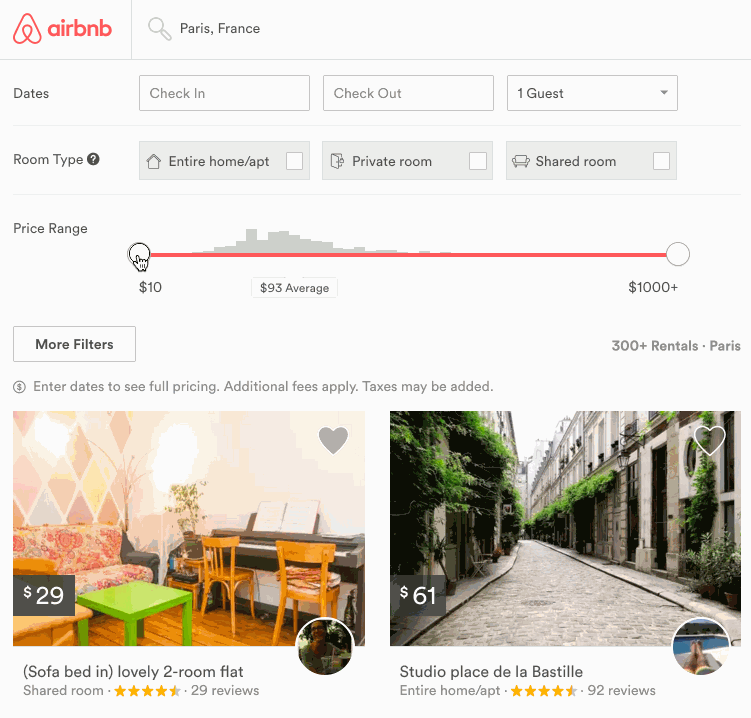Rheostat

A mobile, tablet, desktop, and accessible slider for the web.

Install
npm install rheostat
Props
The algorithm, by default linear, the slider will use. Feel free to write
your own as long as it conforms to the shape.
algorithm: PropTypes.shape({
getValue: PropTypes.func,
getPosition: PropTypes.func,
})
Custom class name that will be applied to the root of Rheostat.
className: PropTypes.string
Custom React component overrides for both the handles, and the "progress" bar.
handle: PropTypes.oneOfType([PropTypes.func, PropTypes.string])
progressBar: PropTypes.oneOfType([PropTypes.func, PropTypes.string])
The maximum and minimum possible values, by default 0 - 100.
max: PropTypes.number
min: PropTypes.number
pitComponent is a custom React component for rendering "pits" across the bar.
pitPoints is the set of points at which it will render a pit. Points are an array
of values on the slider.
pitComponent: PropTypes.oneOfType([PropTypes.func, PropTypes.string])
pitPoints: PropTypes.arrayOf(PropTypes.number)
NOTE: onChange is called whenever the value is changed and committed. This happens at the end of
a drag, keypress, or click event. onChange is recommended when you wish to persist the values.
onValuesUpdated is a convenience event that is triggered while the value is being actively
changed. This includes dragging, click, or keypress. onValuesUpdated is recommended if you need
to work with the values before they're committed.
onChange: PropTypes.func
onClick: PropTypes.func
onKeyPress: PropTypes.func
onSliderDragEnd: PropTypes.func
onSliderDragMove: PropTypes.func
onSliderDragStart: PropTypes.func
onValuesUpdated: PropTypes.func
snap is a boolean which controls the slider's snapping behavior.
snapPoints is an array of values on the slider where the slider should snap to.
If snap is set to true and no snapPoints are set then the slider is snapped into an absolute
position. For example, on a scale of 1-10 if the slider is let go at the 54% mark it'll pick the
value 5 and snap to 50%.
snap: PropTypes.bool
snapPoints: PropTypes.arrayOf(PropTypes.number)
The values, by default 0 and 100.
values: PropTypes.arrayOf(PropTypes.number)
You can disable the slider to prevent the user from moving it.
disabled: PropTypes.bool
Usage
Important: Make sure to include the css file or feel free to create your own.
- Simple.
import Rheostat from 'rheostat';
ReactDOM.render(<Rheostat />, document.getElementById('slider-root'));
- A slider with a multiple handles.
import Rheostat from 'rheostat';
ReactDOM.render((
<Rheostat
min={1}
max={100}
values={[1, 100]}
/>
), document.getElementById('slider-root'));
Live Playground
For more examples you can check out the storybook.
- Clone this repo on your machine.
npm installnpm run storybook- Visit
http://localhost:9001/.